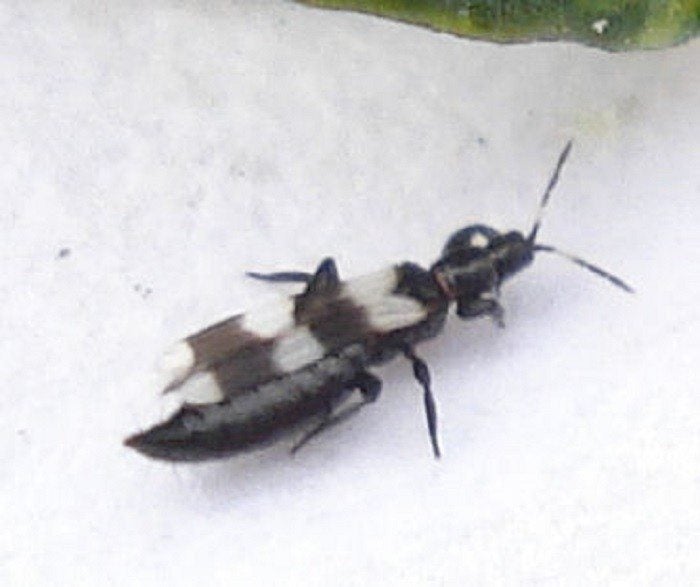What Are Predatory Thrips: How To Use This Natural Predator For Thrips Control


There are all sorts of creepy crawlies that want to snack on your prized plants. Predatory thrips in gardens and interior plantings can help protect your babies from other species that wreak havoc on their productive abilities. What are predatory thrips? They are a very tiny insect in a family of primarily plant eaters. The predatory thrips, however, are good guys. They eat the bad thrips that are munching away on vulnerable plant parts.
Predatory Thrips Identification
For the most part, the bad guys look like the good guys, so predatory thrips identification might prove difficult. Another problem with identification is their size. Both types of thrips are only a half to three millimeters in length. This makes either type hard to spot. Banded thrips are black with white bands, while predatory black hunter thrips are dark brown to black with white wings. The beneficial six-spotted thrip looks like its name while the Franklinothrip is only found on avocado plants and has an unremarkable appearance.
What are Predatory Thrips and How Can They Help?
Predatory thrips eat their plant-sucking counterparts as well as mites, lace bugs, whiteflies, and scale insects. Due to their minute size, they prefer other tiny pests as their chosen food, which makes them a natural predator for thrips that have destructive feeding behaviors. These helpful insects are found on a wide variety of plants, but only where widespread insecticide practices have not wiped out their food source and subsequently, the predatory thrips as well. Predatory thrips in gardens may be found on ornamental or fruit-bearing trees, vegetables, and other varieties of infested plant life in the landscape. They possess sucking mouthparts that pierce the flesh of their prey much as the prey pierce the skin of plants, providing excellent bad thrips control.
Encouraging This Natural Predator for Thrips
As already mentioned, suspension of pesticide in the garden will prevent you from killing the predatory thrips. Use an organicide, if necessary, or spot spray with a targeted pesticide for larger insects. Horticultural soap is effective for soft bodied insects, as well as simply rinsing them off smaller plants with a hose. Due to their small stature, the predatory thrips will also likely be washed off, but with a little luck they will dry off and wing away to effect their beneficial change on another infested plant. Organic thrift control for the bad guys is essential to a healthy garden that is managed without chemicals and harm to the environment. Predatory thrips in gardens provide easy and effective pest control for the small but damaging varieties of insects. Know your predatory thrips identification so you can tell if you are hosting these useful insects and avoid accidentally killing them along with the damaging variety.
Gardening tips, videos, info and more delivered right to your inbox!
Sign up for the Gardening Know How newsletter today and receive a free copy of our e-book "How to Grow Delicious Tomatoes".

Bonnie Grant is a professional landscaper with a Certification in Urban Gardening. She has been gardening and writing for 15 years. A former professional chef, she has a passion for edible landscaping.